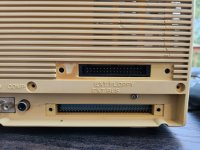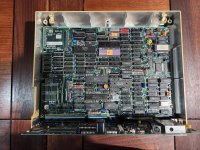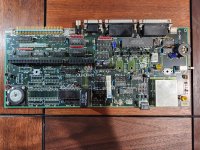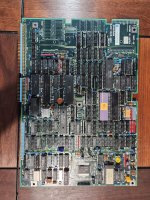Coder
Experienced Member
- Joined
- Apr 16, 2023
- Messages
- 84
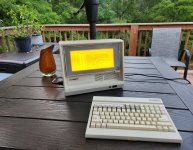
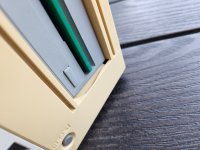
Another eBay find. I really just need to delete my account there. I have zero self control, apparently. This is by far the most fragile computer in my collection. You even think about putting pressure on it's sun-burnt plastic case and it'll snap. I had pieces breaking as I tried to move them slightly to super glue other pieces to them! But, it's finally functional and in mostly one piece. It's a neat little machine. I was told it's gas-plasma, but I don't think so. The front surface is more plastic-y like an LCD. All of my other gas-plasmas are glass. That and the top half has to "warm up" to maximum brightness and is quite dim when powered on cold. I think it has two CFLs and the top is dying.
The computer boots up to a screen where you can allocate some of the memory to use as a RAM disk. That was more useful on the earlier models, as they lacked a HDD. Mine has a 20MB Epson MFM half-height drive, so the RAM disk is less useful. What is useful, however, is the built in "teach" function. CTRL-SHIFT+T gives you the DIP switch settings and a list of other keyboard shortcuts for things like changing the screen brightness and contrast, and accessing it's built in dumb terminal mode.
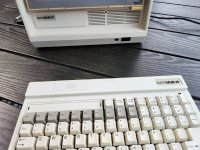
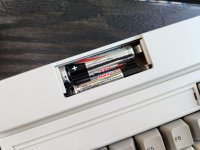
It's standout feature is it's wireless keyboard. It's actually quite nice. The keys are mechanical and have great feedback. Very tactile. The infrared wireless works surprisingly well. I worried it would be laggy, but I haven't noticed any, if there is. It does need to be line-of-site, but you can be at pretty severe angles as long as there's no obstructions in the way. The keyboard can be wired, if you have the proprietary cord. But from what I hear, even corded, the keyboard needs it's 4 AA batteries to work.
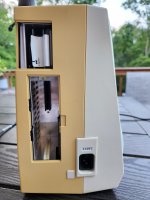
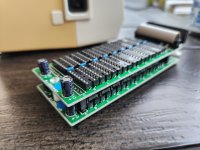
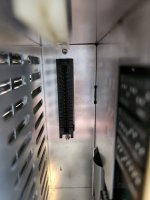
RAM is expandable via a couple of small daughter boards that are accessible from a small panel on the top, left hand side of the machine. The bottom one is populated and the top one has sockets that can be filled. The currently installed RAM needs to be set via the DIP switches, also contained inside this panel. The lower panel was for expansion, though I haven't heard of any expansion cards being offered. I don't know if this is a simple ISA connection or if it's more proprietary. I have detailed pictures of the motherboard if anyone wants to try to figure that out. Also of note on this side is the A/C power input. Notice the small square plate to the lower left of the A/C connector? On older models, that was a button to eject the A/C power adapter to install a battery instead! My model is A/C only and has a permanently installed power board.
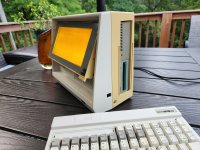
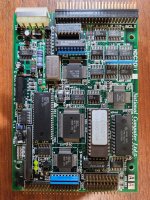
On the right side of the machine is are the 3.5" floppy drive (720kb, as far as I can tell) and 20MB HDD drive. Also on this side is the reset switch and a DC power input. I think the DC input is a leftover from when you could have had this battery powered. It's interesting that the left it in. I have no idea if it's functional.
Sadly the HDD in mine is dying. I'm looking for a good way to back it up before trying to play with it too much more. There's not much on it, but I'd like to keep it for posterity. I've been looking at HDD replacement options. The MFM controller is on a daughter board (right hand picture above) connected to the motherboard via ribbon and I believe uses the SASI interface. My understanding is SASI was the precursor to SCSI and is mostly compatible. That makes me wonder if a SCSI drive or SCSI to flash adapter may work.


